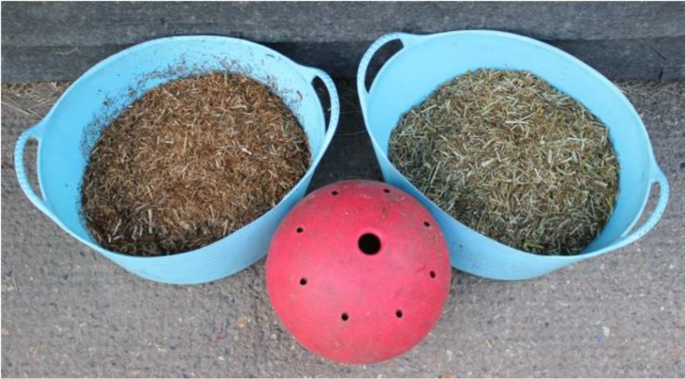Equine Enrichment
The definition of enrichment is “the action of improving or enhancing the quality or value of something”.
Most of us will have heard the word being used possibly in relation to zoo animals, but how many of us try to enrich our horses lives and environments?
Enrichment helps to improve welfare and can be a very valuable addition to your horses management regime, however it is important to remember that enrichment is not designed to replace normal care giving or to make up for short falls in the ability to care properly. It is the idea of mimicking the horses natural environment within their domesticated setting to improve how they live.
The best thing about enrichment is that it doesn’t need to be costly in terms of money or time and should become a normal part of your management regime with your horse. Enrichment can also help to strengthen the bond between you and your horse so there is really no reason not to enrich your horses lifestyle.
A completely natural lifestyle is hard to fully achieve in a domesticated setting due to what is realistic when managing domesticated horses however it can be partially achieved very easily.

Horses exhibit appetitive (seeking) behaviour and consummatory (consuming) behaviours as part of their normal behavioural repertoire. Problems arise when these behaviours cannot be achieved, and this is common in the domesticated setting. Horses are browsing animals and have an innate need to forage. Modern management doesn’t allow for this as we stable horses or only allow turnout in certain areas (paddocks) or for certain amounts of time and provide them with a single type of forage – usually hay or haylage combined with grass if they get turnout. This instantly reduces their need and ability to forage as the forage is presented directly to them, they do not need to seek it out (appetitive behaviour). We control the amount of forage they get, so once it is gone many horses will go for periods of time without forage and therefore cannot satisfy their consummatory behaviour either. This is the point where stereotypic behaviours occur as the horse is ‘programmed’ to seek and consume and when they can’t do this, they redirect their behaviour to wood chewing, box walking or crib biting.
Horses should eat for 16 – 18 hours a day and in the wild, would have grazed on more than 50 different types of grasses and herbage. This is very different to today’s horses who are kept in paddocks which usually only contains one grass species.
There are loads of ways that you can add enrichment to your horses environment:

Turnout – a study on different turnout times and routines suggested that horses showed more restlessness, frustration, and physical activity (running around and bucking) when not given sufficient access to turnout to be able to forage and socialise.
Aside from increasing your horses turnout, other enrichment ideas include companionship (turning out with other horses) to allow for socialisation and mutual grooming (if this is safe for your horse) and adding novelty into the environment such as including hedges and trees for horses to browse on. If your grazing is poor, are you able to hang haynets around the field to encourage movement and provide a different forage source or even using a treat ball with grass pellets in so they can kick it around the field and search for the grass nuts that fall out.
Stable enrichment can be really easy and simple. Something like introducing a different forage source can make a lot of difference to your horses’ environment. If you usually feed hay, add in some haylage or good quality straw in a different net which is hung in a different position in the stable to encourage your horse to move and allow them to express their natural browsing instinct. You can take this further by providing a ‘cafeteria’ style of feeding using multiple buckets of different fibre courses such as fibre nuts, chaff and sugarbeet so that your horse can express their natural browsing instinct.
Treat balls with high fibre cubes or grass pellets in are also an excellent way of encouraging that seeking behaviour and will help to keep your horse busy and mentally stimulated.
Other ideas for the stable include hanging ‘treats’ such as carrot or vegetable kebabs or providing a stable lick. Even hiding small handfuls of fibre cubes in each corner of your horse’s stable will encourage them to move around and find them. Picking safe to eat weeds such as cow parsley, nettle, dandelion or other hedgerow herbs and bringing them into the stable will allow your horse to use their natural browsing instinct. The use of stable mirrors has also been proven to be beneficial in re-creating the feeling of companionship.
Enrichment can come in many forms and even something as simple as hand grazing or giving your horse a nice groom can be really good for them. It doesn’t have to be time consuming or complicated, but enrichment should be a daily part of your horses normal care routine.
NEED GUIDANCE?
If you would like any further information, please feel free to contact our nutritional team on 01622 718487 or email info@saracenhorsefeeds.co.uk
Feed Advice Form
Complete our online form to receive a detailed nutritional plan for your horse or pony from one of our registered nutritionists.
Quick Feed Finder
Use our quick and easy feed finder as a guide to select the right feed for your horse or pony.












